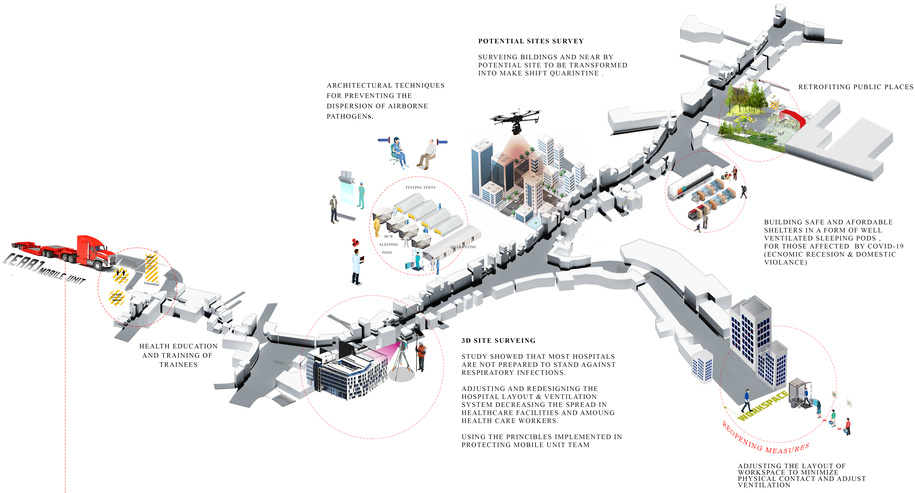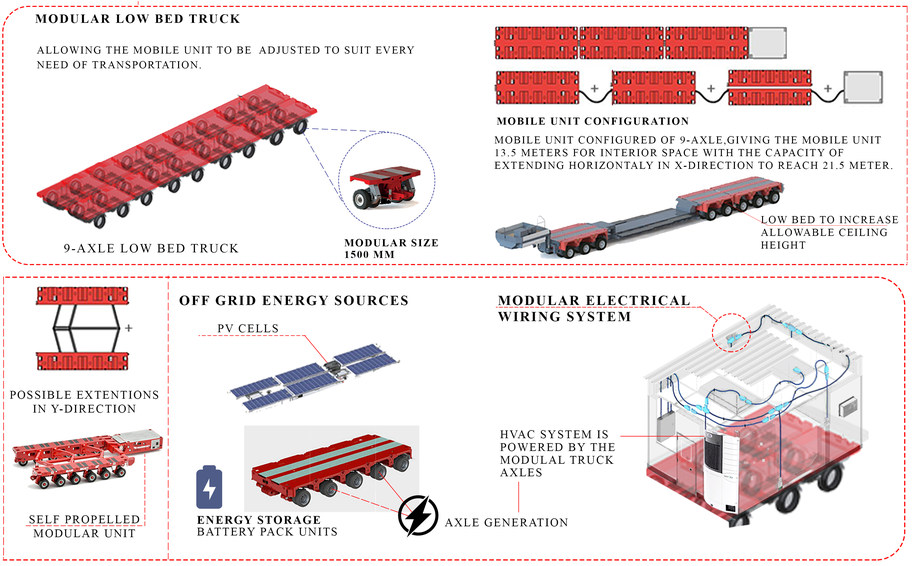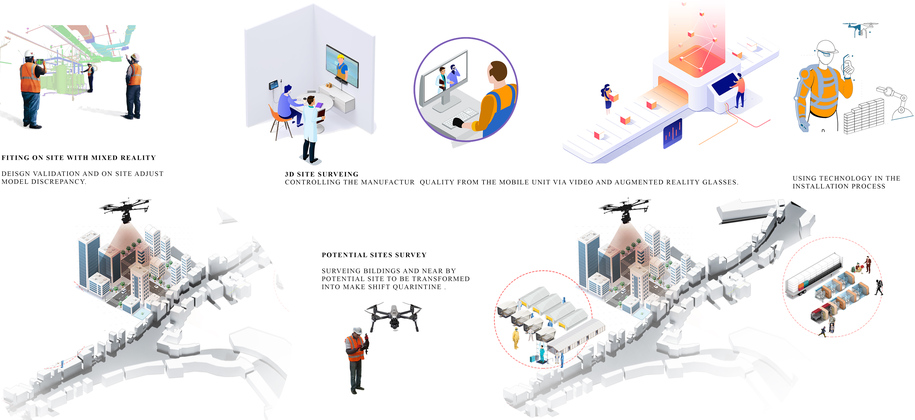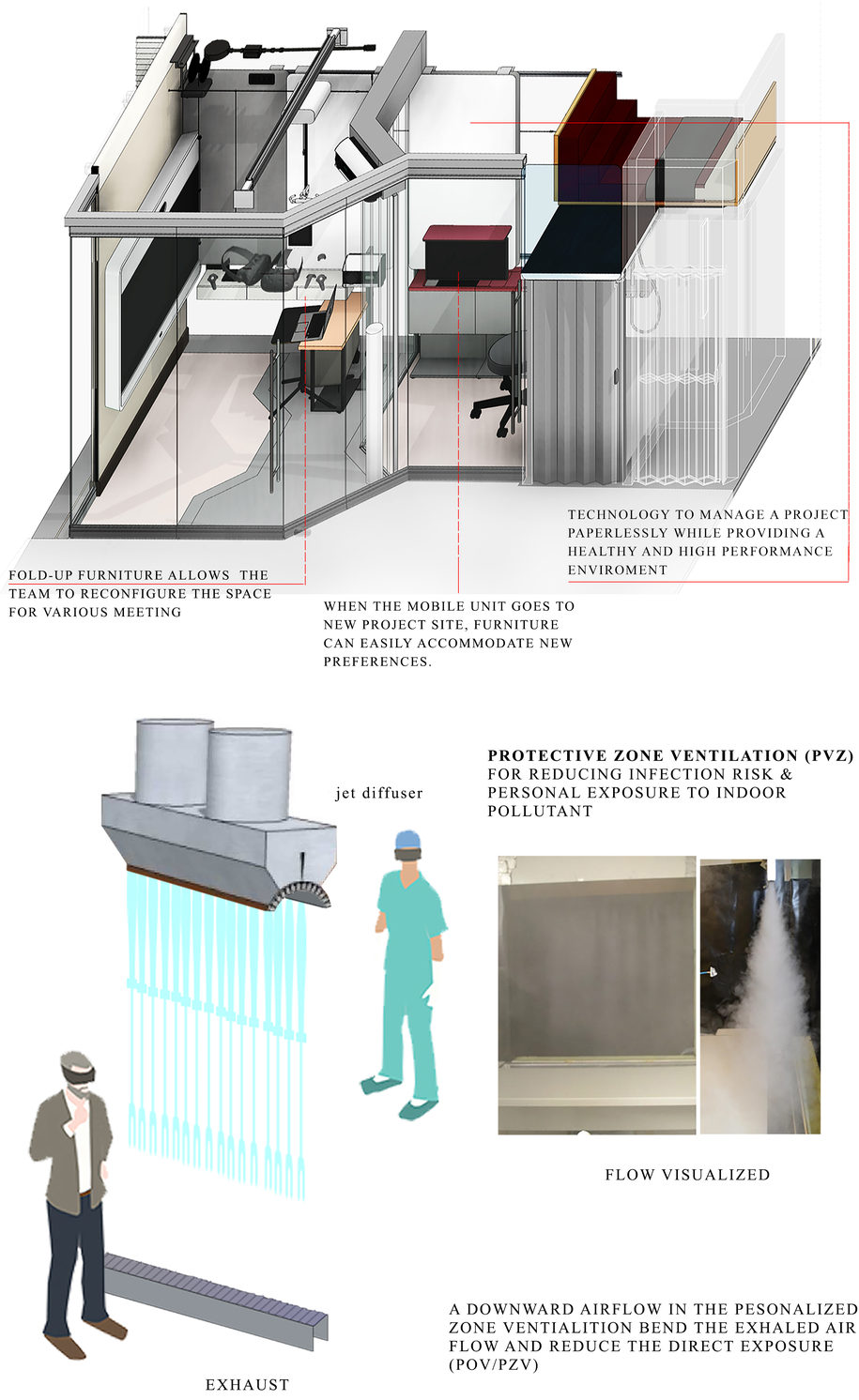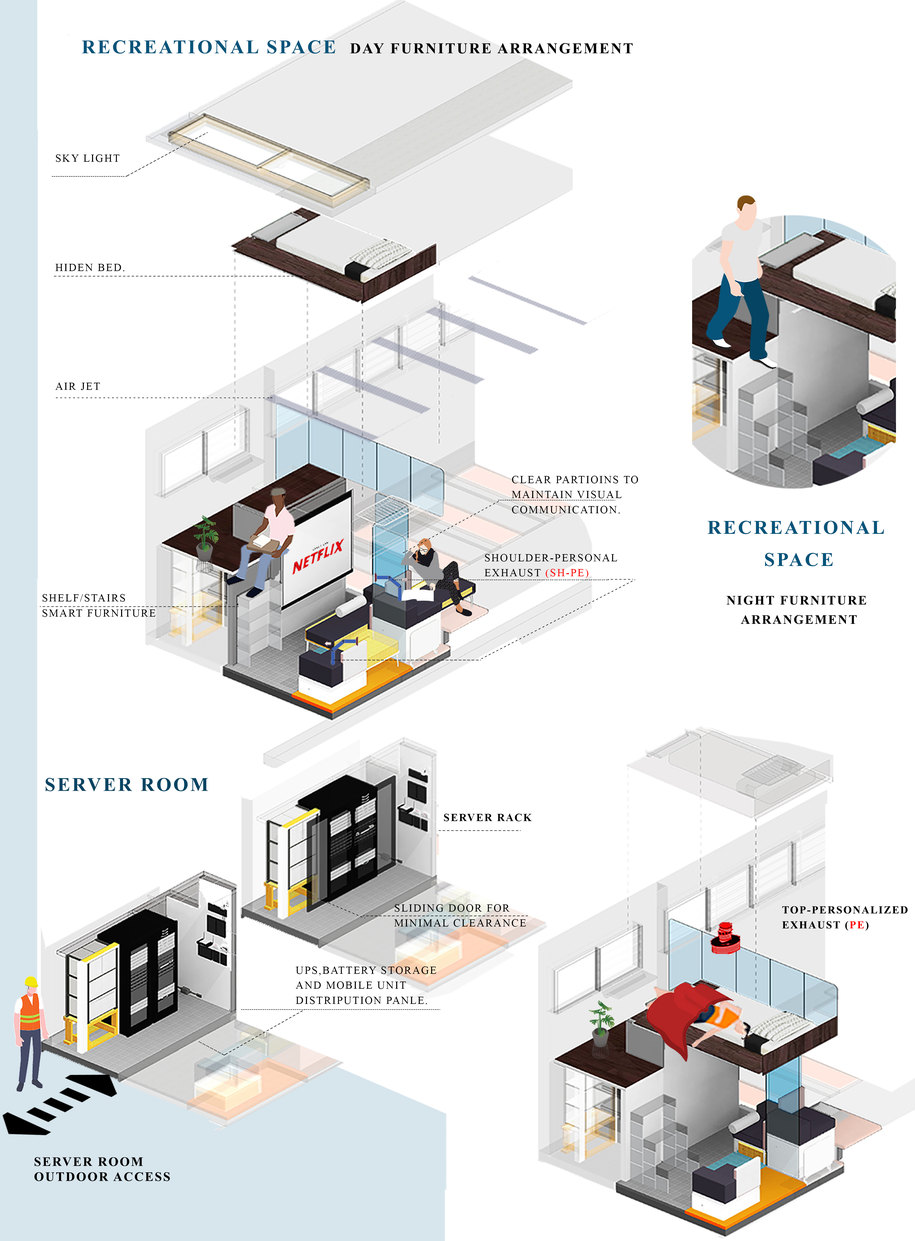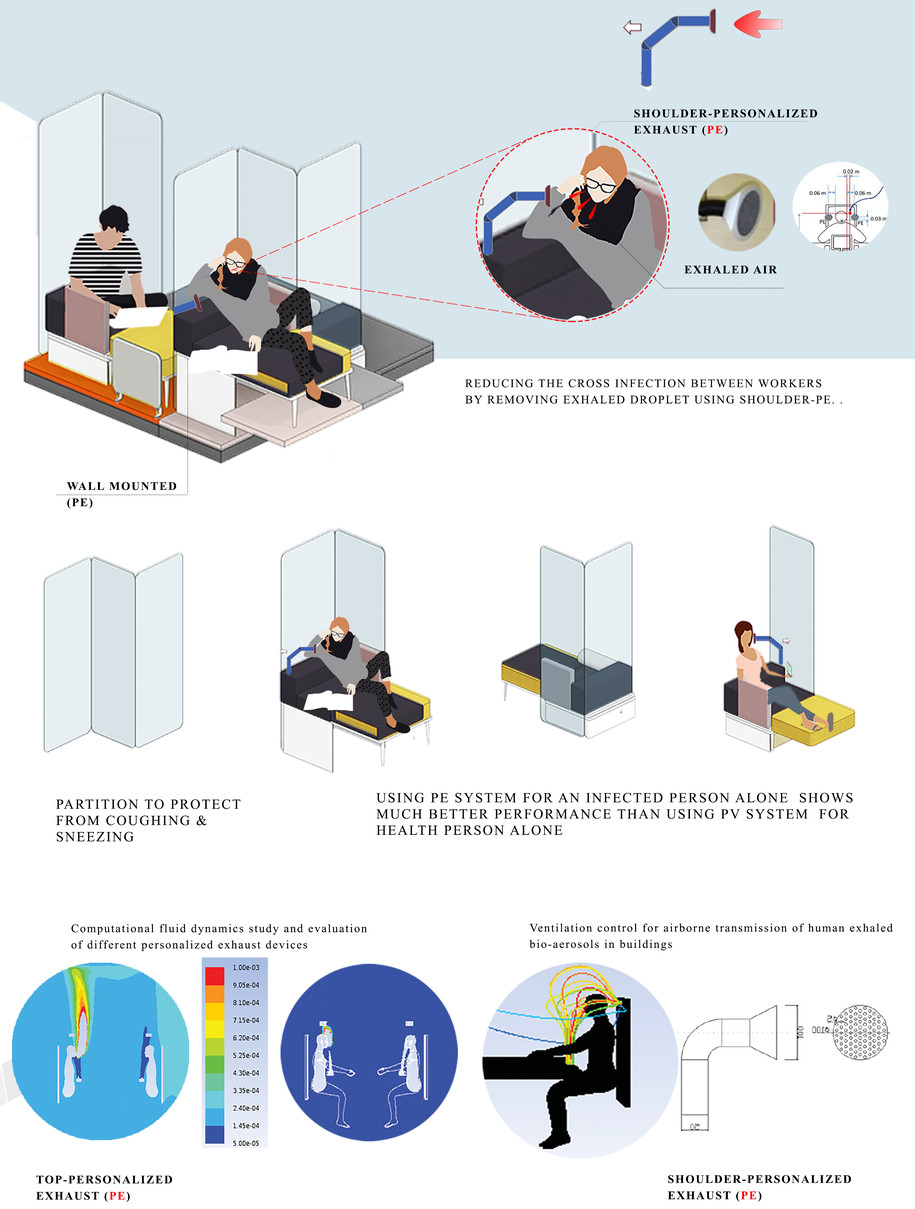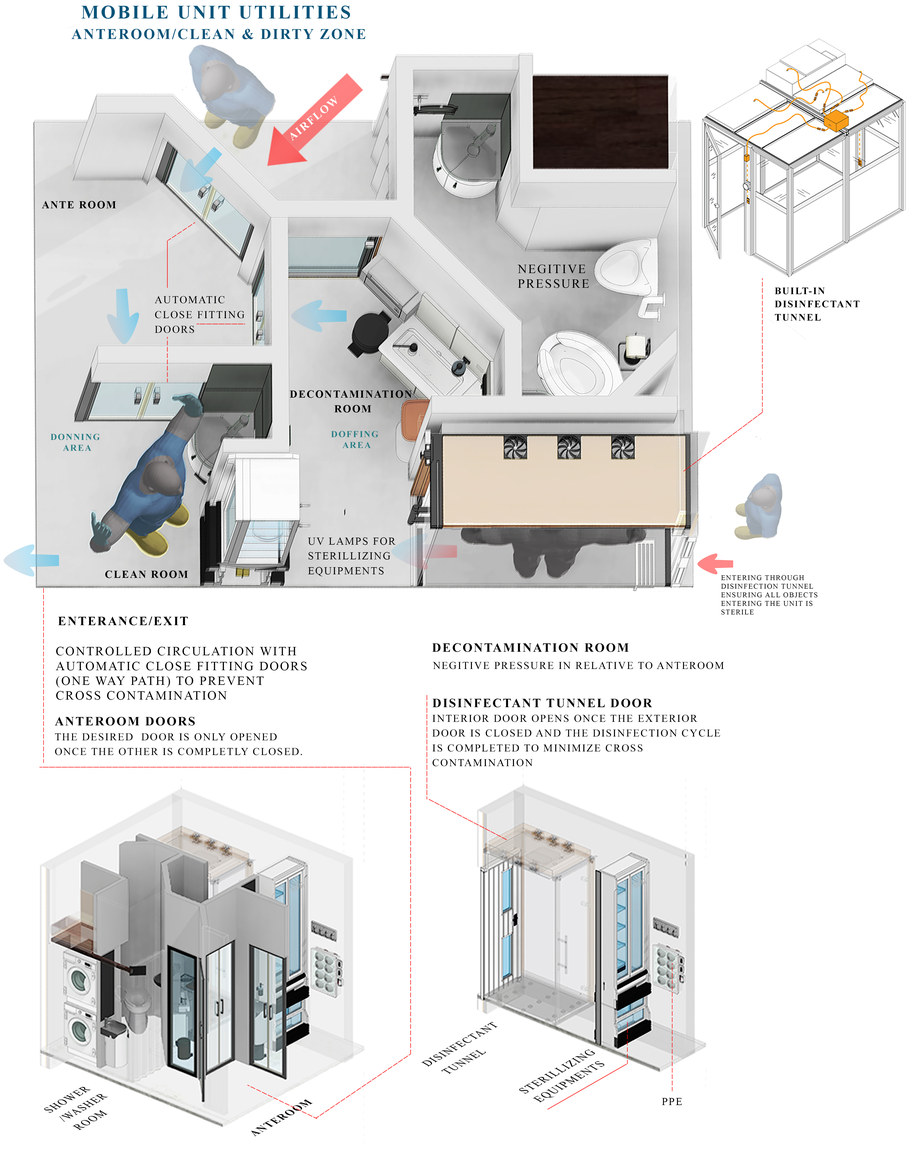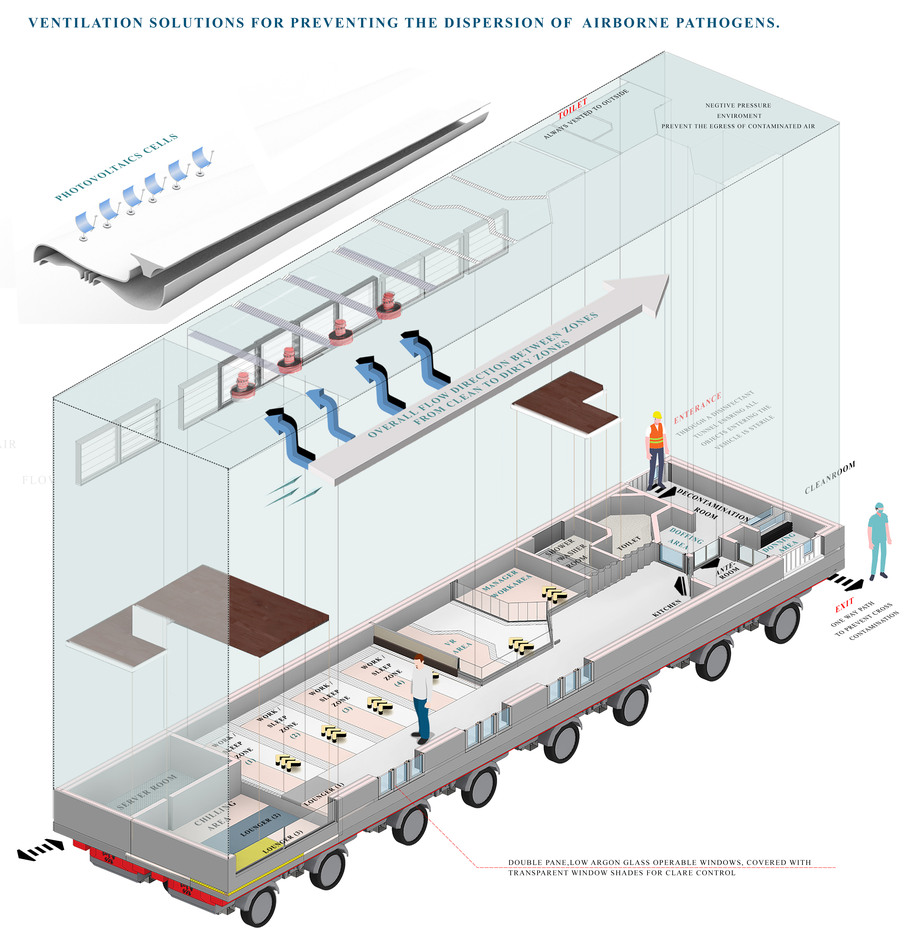Pandemic Architecture, an International Ideas Competition curated by the Design Ambassador for ARCHISEARCH.gr, invited the creative community to open up a dialogue and create a think tank, looking for ideas from the architectural and design community about the future of the living, the workspace, the public space and the tourism industry after the outbreak of Covid-19.
Ear – Emergency response, was shortlisted in top 50 out of 440 projects.
-text by the authors
In the current state of the world where the pandemic has made more people rethink the way they look at their health and elevating the health awareness of the general populace to new heights; and with that rise in awareness, so too must we provide the means for a future safer environment.
My concept is to design a mobile unit composed of a highly specialized multi-disciplinary task force capable of rapid adaptable adjustment and deployment during 3 different states, During the pandemic, Exit Plan, and Post Pandemic.
The Mobile Unit will be comprised of modulus trailers that can be reconfigured as needed with a fully functional and safe workspace with air curtains aided with personalized exhaust system between each zone to minimize the risk of infection inside the mobile unit, the unit is equipped with state of the art equipment to expedite the design process with minimal physical contact.
In the current state of the pandemic, the multi-disciplinary team will deploy to hospitals and study the layout of the hospital and redesign the hospital to accommodate more patients and adjust the ventilation rate to minimize the risk of infection either mechanically or naturally, and cautiously add on temporary
compartments to increase the capacity of the hospital if needed.
The team would also search for nearby potential sites and buildings to be transformed into makeshift quarantine, testing facilities, and other medical facilities.
due the current economic caused by the pandemic and the stay at home order in most countries.
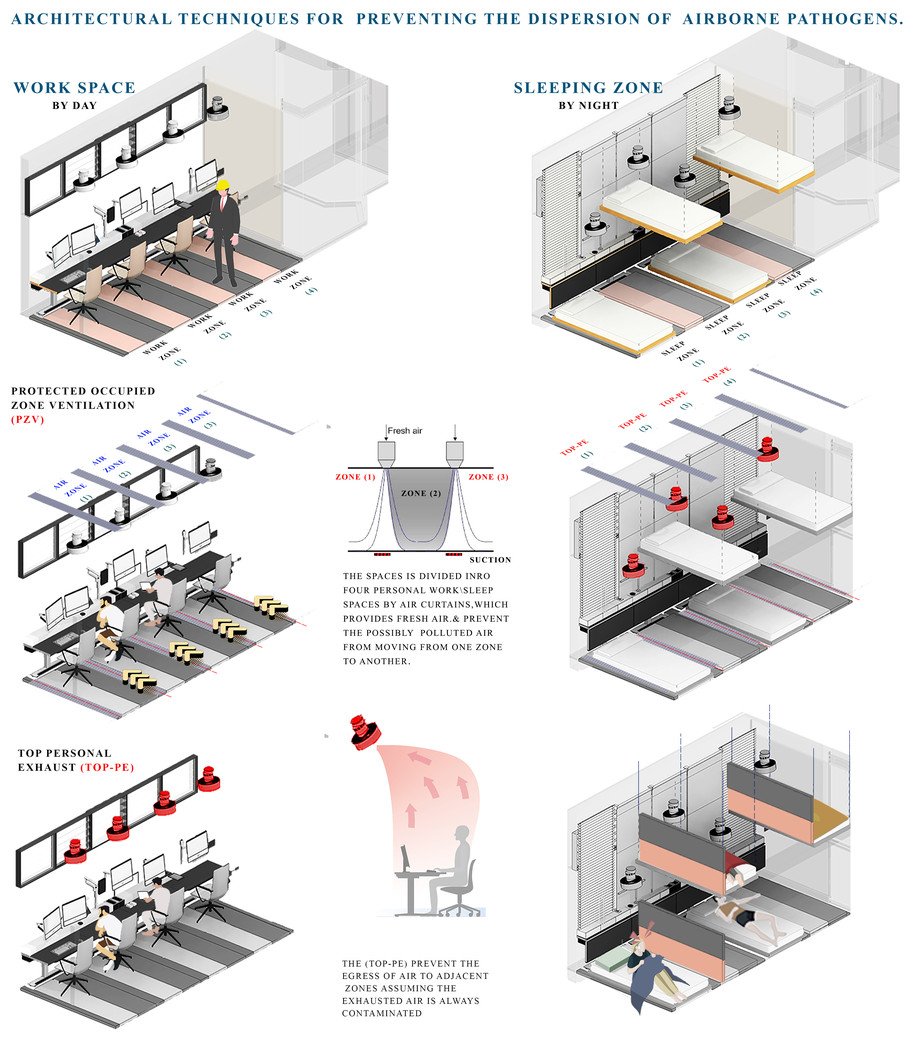
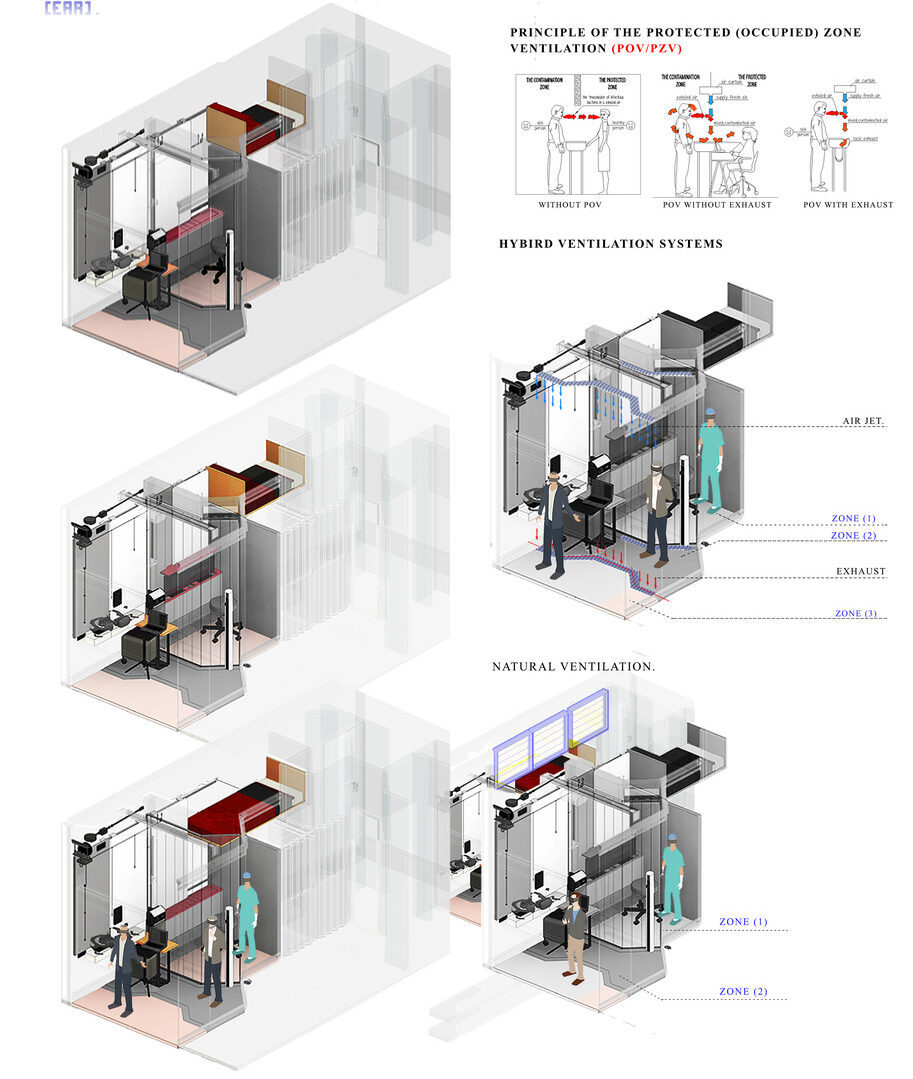
Currently, the standards of sanitation and ventilation have skyrocketed and continue to do so, while office and public buildings no longer meet the required standards to prevent outbreaks, with countries reopening back up to full capacity, this is a major risk for the emergence of new outbreaks.
The team would deploy and adjust the layout of offices and hotels to redirect the flow of the people in a way that would minimize direct physical contact, increase the ventilation rate through natural or mechanical means and maintain an aseptic and infection-free environment.
Only in a perfect world would everything work, but even in failure can the opportunity be found, using the data collected from all projects maintained by the task force.
It will lay down the foundations of a global health system and maintain a high standard of sanitization and preparedness post-pandemic when a vaccine is synthesized, the mobile unit can function as a planner using the data collected previously to help lay down a plan to efficiently distribute the vaccine.
These are some of the avenues the multi-disciplinary task force can explore, but the major purpose of this team is to implement the aforementioned improvements and safety measurements in the most efficient way possible with minimal impact towards our lifestyle and maximum impact towards preventing more outbreaks.
_________________________________________________________________________________________
Facts & Credits
Participants: Mona Ali Abdel Wahab
Country: Egypt
The project was shortlisted in top 50 out of 440 projects.
The impact of Pandemic Architecture competition on the international architectural community was astonishing, with the number of registrations to exceed 800, with the final proposals to exceed 400 and with participants from more than 60 different countries.
Results were officially announced on the 25th of September.
_________________________________________
Check out the open call and the jury here!
READ ALSO: Public Prompts | Pandemic Top50
